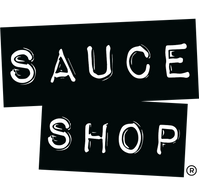Fermented Hot Sauce & Our Signature Chilli Mash
One of the things that makes our products taste great is our in-house signature chilli mashes that we use to make our fermented hot sauce. We have two signature mashes that are always in use, these are Jalapeno and Habanero. Our signature Jalapeno mash is used to make our Buffalo Hot Sauce, Original Hot Sauce, Sriracha Chilli Sauce and our Honey Sriracha Drizzle. Meanwhile our signature Habanero mash is use to Habanero Hot Sauce and Habanero Ketchup. Every so often we might introduce something limited edition which needs a different chilli and these may or may not be fermented.
When we first started fermenting chillies it was in a 20 litre bucket in mine and Pam's house in 2015. As the business has grown so has our need for chillies and the fermenters have gotten a lot bigger too. There was a time when we looked to buy in pre-fermented chillies but these always contained added acetic acid (similar to vinegar but chemically produced) and they never tasted as fresh as when we'd made it ourselves. So we've scaled this up using lots and lots of barrels and we've learnt a few things about fermentation along the way. This has involved a few chilli barrel explosions, a bit like a 100 litre can of fizzy drink blowing it's top off!
Fermentation
The art of ageing our hot sauces lies in the process of fermentation. The trick is nothing new; fermentation has of course been around long before any of us food and drink experimenters came along… The first recorded use of yeast to produce a beverage can be dated back to 7000 BC. This practice may be more familiar to beer lovers, and as keen homebrewers ourselves we have always had an interest in the way fermentation can produce such diverse flavours and aromas. The activity involved in beer making is the same basic metabolic process, that consumes sugar in the absence of oxygen, that occurs in our chilli barrels (albeit Lactobacillus bacteria rather than yeast).

The Process
Our use of this method involves blending chillies with salt and sealing them into barrels. Inside, the Lactobacillus bacteria, naturally found on the chillies, converts the sugars into lactic acid and CO2 – generating a wealth of new complex flavours and an amazing aroma. It takes approximately 2-3 weeks for our mash to reach the desired ferment. At this point we use it when cooking our chilli or hot sauces.

